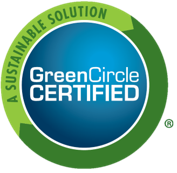Are You Overlooking These 3 Audit Risks in Your Sustainability Program?
Even companies with mature, well-funded ESG programs are not immune to audit risk. In fact, overconfidence can sometimes mask the small issues that turn into big audit failures.
Here are three of the most overlooked risks:
Outdated Documentation
You may have a great policy on paper, but if that document is three versions old or doesn’t reflect current practice, it won’t pass muster. Certifiers look for consistency and traceability across documents backed by current data reporting to verify documentation.Supplier Blind Spots
Many sustainability claims rely on supplier inputs, but how often do you verify them? One vendor submitting incomplete or unverifiable data can undermine your entire sustainability claim.Undefined Roles and Responsibilities
When it’s unclear who owns audit preparation internally, tasks get dropped. Audits are cross-functional by nature: HR, procurement, operations, and sustainability teams all need to be aligned.
GreenCircle’s Audit Readiness Assessment brings these issues to light before they cause certification delays or worse, damage your brand’s sustainability reputation. We help you spot the risks no one’s talking about and build the systems to eliminate them.
Want to de-risk your next audit? Book your audit readiness assessment.
Written by Sara Risley, Certification Officer, GreenCircle Certified
About Sara
Sara brings over 15 years of experience in product certification and regulatory compliance. Before joining GreenCircle, she served as the Vice President of Certification at Green Seal, where she led the certification department for two years. Prior to that, she led NSF International's food product certification division, overseeing independent verification for food labels and packaging claims such as Organic and Non-GMO certifications. Additionally, she spent five years as the technical operations lead at NSF International, managing ANSI-accredited standards for commercial food equipment, food contact materials, and water filters.




